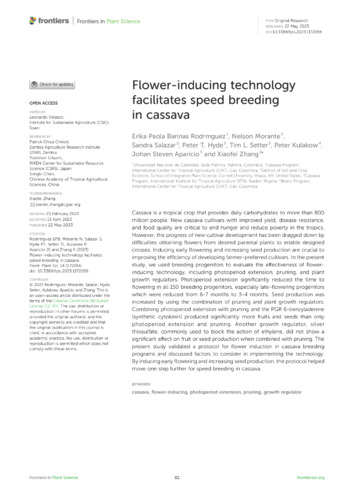Flower-inducing technology facilitates speed breeding in cassava
Cassava is a tropical crop that provides daily carbohydrates to more than 800 million people. New cassava cultivars with improved yield, disease resistance, and food quality are critical to end hunger and reduce poverty in the tropics. However, the progress of new cultivar development has been dragged down by difficulties obtaining flowers from desired parental plants to enable designed crosses. Inducing early flowering and increasing seed production are crucial to improving the efficiency of developing farmer-preferred cultivars. In the present study, we used breeding progenitors to evaluate the effectiveness of flowerinducing technology, including photoperiod extension, pruning, and plant growth regulators. Photoperiod extension significantly reduced the time to flowering in all 150 breeding progenitors, especially late-flowering progenitors which were reduced from 6-7 months to 3-4 months. Seed production was increased by using the combination of pruning and plant growth regulators. Combining photoperiod extension with pruning and the PGR 6-benzyladenine (synthetic cytokinin) produced significantly more fruits and seeds than only photoperiod extension and pruning. Another growth regulator, silver thiosulfate, commonly used to block the action of ethylene, did not show a significant effect on fruit or seed production when combined with pruning. The present study validated a protocol for flower induction in cassava breeding programs and discussed factors to consider in implementing the technology. By inducing early flowering and increasing seed production, the protocol helped move one step further for speed breeding in cassava.

